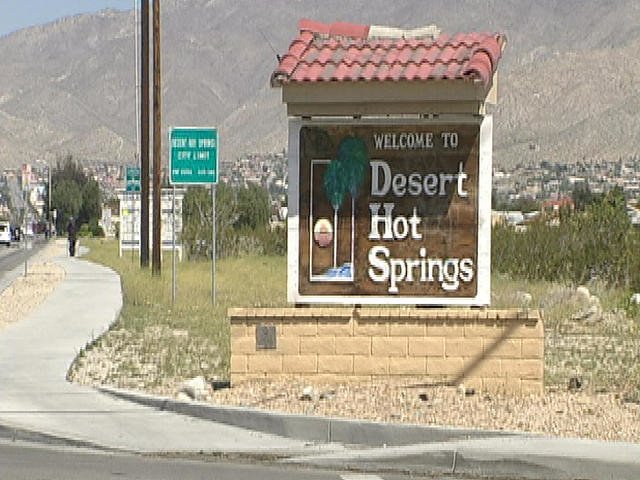Why Is Desert Hot Springs So Dangerous?
Photo courtesy of KPSP Local 2
Why Desert Hot Springs Can Be Dangerous: A Look Beyond the Tourist Brochure
Desert Hot Springs, California, conjures images of steaming pools, natural mineral baths, and a haven for relaxation. However, beneath the surface of this idyllic oasis lies a reality that necessitates caution. While Desert Hot Springs boasts natural wonders, it also presents a unique set of hazards for the unsuspecting visitor.
Unforgiving Temperatures: A Desert's Double-Edged Sword
The very feature that attracts visitors – the geothermal activity – is also the primary source of danger. Desert Hot Springs sits on an active fault line, leading to numerous natural hot springs scattered throughout the area. These springs can reach dangerously high temperatures, exceeding 180°F (82°C) in some cases. A single misstep or a moment of carelessness can result in severe burns that require extensive medical attention.
The deceptive nature of hot springs adds to the risk. Unlike boiling water, which bubbles and steams visibly, some hot springs may appear deceptively calm. A seemingly inviting pool could harbor scalding temperatures lurking just beneath the surface. Tragically, there have been documented cases of fatalities due to accidental immersion in these hidden dangers.
Hidden Hazards: More Than Just Heat
While extreme temperatures pose the most immediate threat, other hidden dangers lurk within these geothermal wonders. The mineral content of the water varies depending on the specific spring, but some may contain high levels of sulfur or other potentially harmful elements. Exposure to these minerals, while generally safe for short durations, can irritate the skin, eyes, and respiratory system in some individuals, particularly those with pre-existing conditions.
Furthermore, the stagnant nature of some hot springs can create an environment conducive to bacterial growth. Untreated springs pose a risk of contracting waterborne illnesses like Legionnaires' disease or E. coli infections. It's crucial to only soak in developed and maintained hot springs with proper water treatment and temperature regulation.
Why Is Desert Hot Springs So Dangerous?
Why is Desert Hot Springs so dangerous? Desert Hot Springs poses dangers due to scalding hot springs, unstable ground caused by geothermal activity, and potentially harmful minerals and bacteria in the water. Following safety guidelines like using developed springs and testing water temperature is crucial.
Unstable Ground: A Legacy of Geothermal Activity
The geothermal activity that creates the hot springs can also lead to unstable ground. The earth's crust around some springs may be thin and brittle, posing a risk of collapsing underfoot. This is particularly concerning near undeveloped hot springs, where proper safety measures may not be in place. Staying on established paths and avoiding venturing near unmarked areas is vital to avoid potential injuries.
Beyond the Natural World: Safety Concerns in Desert Hot Springs
The dangers in Desert Hot Springs extend beyond the natural environment. The city has grappled with higher crime rates compared to the national average. While significant strides have been taken towards improving public safety, it's still essential to exercise caution, particularly in isolated areas.
Enjoying Desert Hot Springs Safely: A Guide for Adventurous Travelers
Despite the potential dangers, Desert Hot Springs can be a safe and rejuvenating experience for those who approach it with the necessary awareness and precautions. Here's a guide to maximizing your enjoyment while minimizing risks:
Seek Developed Hot Springs: Prioritize soaking in well-maintained hot springs at resorts or parks. These locations typically regulate water temperature, ensure proper sanitation, and provide lifeguards for added safety.
Respect Posted Signs: Never ignore posted warnings or signage near hot springs. These signs are often placed to alert visitors of potential hazards such as unsafe water temperatures, unstable ground, or restricted access areas.
Test the Water Before Immersing: Don't be fooled by a spring's inviting appearance. Always test the water temperature with a hand or foot before fully submerging yourself.
Stay Hydrated: Hot springs can lead to dehydration. Drink plenty of water before, during, and after your soak to prevent dizziness or fainting.
Limit Soak Time: While a hot spring soak can be incredibly relaxing, overexposure to high temperatures can be counterproductive. Limit your soak to short sessions with breaks in between.
Be Aware of Surroundings: Pay attention to your surroundings and avoid venturing near unstable ground or areas with restricted access.
Supervise Children: Children are particularly vulnerable to burns and require constant supervision near hot springs.
Conclusion: Desert Hot Springs: A Place for Caution and Calculated Relaxation
Desert Hot Springs offers a unique blend of natural wonders and potential hazards. By acknowledging the risks and taking necessary precautions, visitors can transform a potentially dangerous encounter into a safe and rejuvenating experience. Embrace the warmth, appreciate the minerals, and soak in the natural beauty – but always do so with a healthy dose of caution and respect for the power of nature's geothermal wonders.


